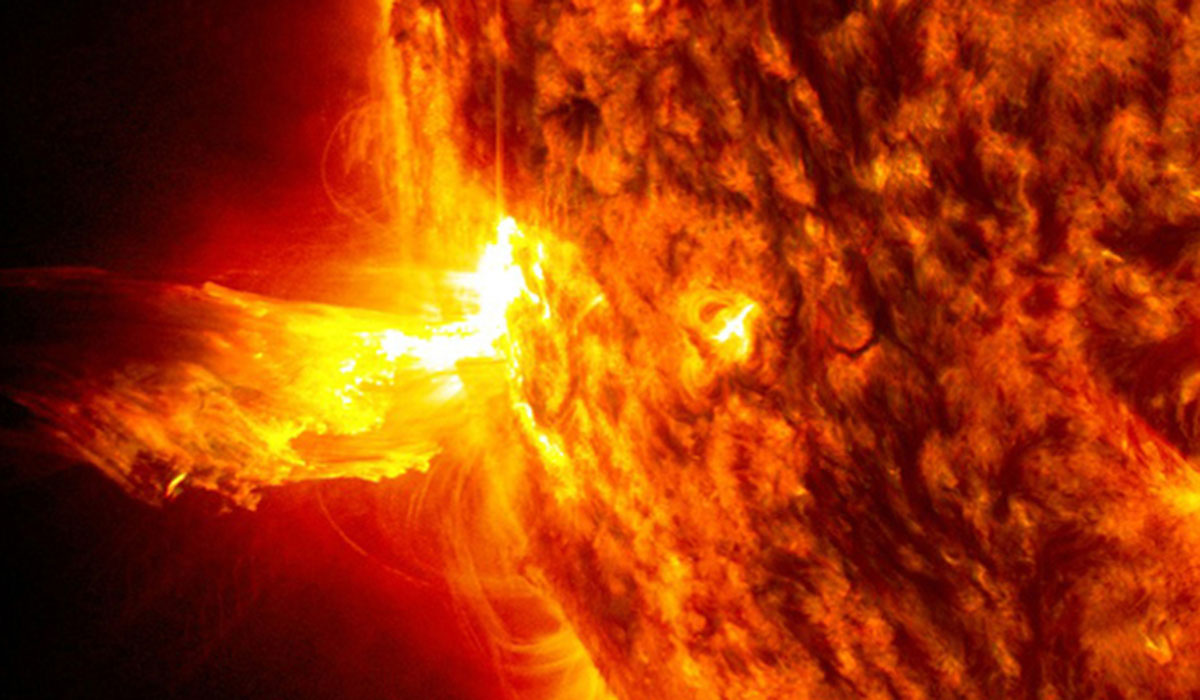
S. Odenwald and J. Green (NASA) completed a study of the economic impact that a solar superstorm similar to the August-September 1859 event, would have upon the geosynchronous communication satellite system using a Monte Carlo simulation of possible arrival times and intensities during the next solar activity cycle (2008-2018). Through an NSF Small Experimental Research Grant, Odenwald used realistic satellite parameters for the existing fleet including their transponder load and market prices for leasing, to determine how solar power declines during the event, and catastrophic satellite losses, would reduce the cycle-averaged revenue from the 250-member satellite fleet. They concluded that the lower limit revenue loss would be 20 billion. Odenwald also researched the manner in which space weather events have been reported by major newspapers since 1850, and discovered that since 1950, there has been a sharp decline in both the details that are reported of impacts, and the movement of these stories off the front pages and deeper into the newspaper. He concluded that since 1950, we have been living in an era that is extremely a-typical of other eras where solar storms and their impacts were accorded far higher news media coverage, and at much higher quality. S. Odenwald is continuing his space weather research on impact modeling, and was asked to give the keynote address at the 2008 Heliophysics Summer School in Boulder as part of a course on space weather research for graduate students in space physics and space weather forecasting.
With the loss of IMAGE in 2006, S.Odenwald concluded his Directorship of the education and public outreach activities for this mission. Currently he is the E&PO lead for the Hinode EIS instrument, and a collaborator with the THEMIS and MMS mission E&PO activities. He is a key member of the Sun-Earth Education Forum since its inception in 1999, and writes the Technology Through Time essays and produced podcasts on topics in space and solar research. In 2007, he was awarded a NASA education grant to continue, and expand, his Space Math at NASA program which provides weekly math problems to K12 teachers and students with an astronomical theme.
G. Kletetschka, V. Mikula and graduate student T. Adachi worked in several different areas, mostly related to magnetism. They developed a magnetic way to detect chemical changes in lacustrine sediments as well as trees with implications for climate change detection. They dwelled into the anomalous magnetism of rhombohedral minerals as well as characterized magnetism of iron oxide nano-particles and developed a new method of obtaining demagnetization spectra revealing the magnetic history. They identified new low temperature magnetic transitions in minerals that occur inside the meteorites and analyzed magnetic record of chondrules that were part of chondrite meteorites. In shock and impact research, they studied magnetic properties of Moon rocks and its magnetic anomalies related to the meteorite impacts, studied shatter cones and revealed a surprising shock magnetic signatures indicating the impact intensity. They looked into the magnetic characteristics of impact ejecta material. They identified various types of concretions in Utah, Czech Republic and Hawaii that seem to be candidate for Mars spherules identified by the mars rovers. G. Kletetschka and his group identified a new method how to obtain magnetic characteristics of sn entire asteroid. They contributed to the field of astrobiology through an analysis of the chemistry of travertine deposits from Death Valley in search for astrobiology evidence and identified the steps how to search for radiation resistant organisms in space.
G. Kletetschka's group identified the way how to use JWST technology in medicine for neural implants and also showed that neurodegenerative disorders generate biomineralization detectable by magnetic methods. They completed fabrication of micro-shutter arrays that will become part of JWST and looked into the future space applications. They developed software and hardware allowing us to magnetically scan flat surfaces while resolving magnetic features of less than 0.2 mm in size. Moreover, they generated a new hypothesis how to detect dark matter interaction with solid surfaces while assuming that the dark matter is in a form of mirror matter and designed and start fabrication of carbon nanotube – based electronic devices for spaceflight instruments, including nano-compas and electron gun.
